25 animal species which are on the verge of extinction
Scientists state — many species of plants, animals, birds and insects disappear from a face of our planet 1 000 times faster than natural level. It means that we lose from 10 to 130 types every day.
In the report published at the beginning of 2010, the Commission on a biodiversity of the UN pays attention to catastrophic changes in the world of wildlife. The author of the report compares a present situation with disappearance of dinosaurs 65 million years ago.
Today more than 40% of all live types on Earth are under the threat of disappearance. If these rates of extinction remain or will accelerate, then the number of endangered species in the next decades will be estimated in millions. Certainly, it is an occasion to think to each inhabitant of the planet because disappearance of separate types inevitably conducts to global environmental problems, threatening stability of all ecosystem of Earth.
Today we suggest to look at 25 most recognizable animal species over which the threat of total disappearance has hung and to present the world of the wild nature without them …
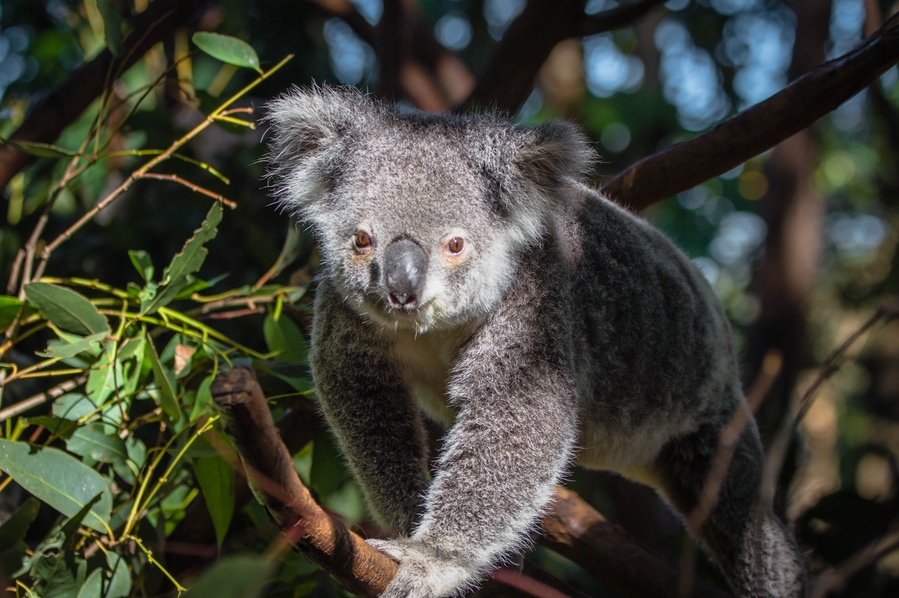
- Koala
Status: vulnerable.
Threats: By estimates of the Australian fund Koala (data of 2008) in the wild nature there were about 100 000 koalas.
On a koala active hunting up to the beginning of the 20th century when they appeared on the verge of disappearance was conducted. Millions of skins of a small animal were sold in Europe and the United States.
Large-scale extermination of koalas happened in Queensland in 1915, 1917 and 1919, then in arms, poisons and loops more than one million animals were killed. This slaughter caused a wide public response and became probably the first environmental problem which rallied Australians. However, despite the growing movement on protection of local types, the poverty and hunger which resulted from droughts of 1926 - 1928 years led to the next massacre. Within one month after opening of a hunting season in August, 1927 600 000 koalas were destroyed.
Today the main threats to survival of a look are: urbanization consequences, degradation of habitats, cutting of a fodder plant of koalas – an eucalyptus, the road accidents, attacks of dogs. In recent years some colonies of koalas strongly suffered from infectious diseases, especially from clamidiosis. Clamidiosis of koalas differs from a human form, it can lead to a blindness and sterility. Inspections showed that at least 50% of individuals are infected with chlamydias and a retrovirus weakening immunity of animals.
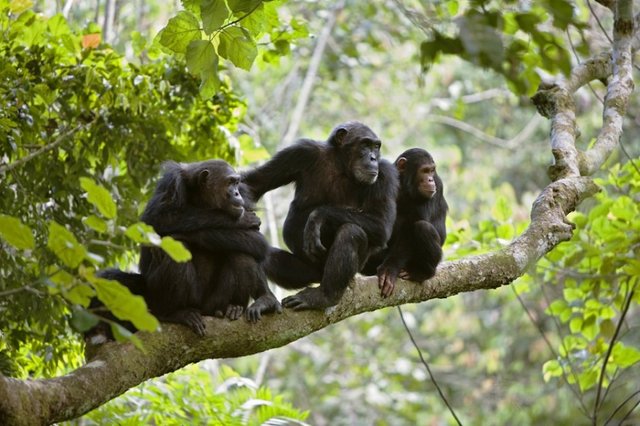
- Chimpanzee
Status: being under the threat of disappearance.
Threats: In the last 20-30 years fast reduction of population of a chimpanzee is observed, forecasts for the future aren't consolatory.
Decrease in number of a chimpanzee is connected with destruction and degradation of their habitat (podsechno-fire agriculture, large-scale logging), poaching for the sake of production of meat and illegal trade in cubs. Recently infectious diseases became big threat of population of a chimpanzee. The matter is that chimpanzees are susceptible to human diseases, and, in connection with growth of contacts between them and people, there is an increase in quantity of cases of infection.
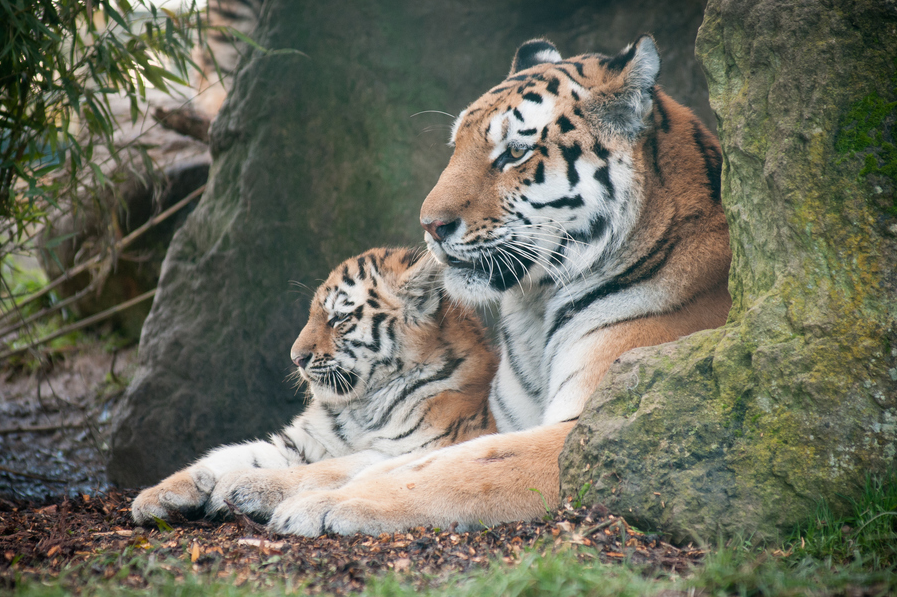
- Amur tiger
Status: being under the threat of disappearance.
Threats: In the thirties the 20th century the number of the Amur tigers was no more than 50 individuals, and according to some information – no more than 20-30. Systematic actions for preservation of a look by 1980th years have borne fruit, the number of animals has increased to 200.
Poaching was the main threat to existence of big cats always. The bone of a tiger in the Chinese black market is appreciated worth its weight in gold, a skin of a tiger — a desired trophy.
In the late eighties demand for a bone of a tiger sharply increases, well organized gangs of poachers have strongly knocked down a livestock of tigers at this time. Only by 1993 programs for preservation of the Amur tiger have been renewed, and in 1996 their number has come nearer to 430.
Today the quantity of the tigers living in the wild nature is estimated at 431 – 529 individuals.
Also large-scale illegal cabins and wildfires depriving of their habitual habitats became serious threat for tigers.
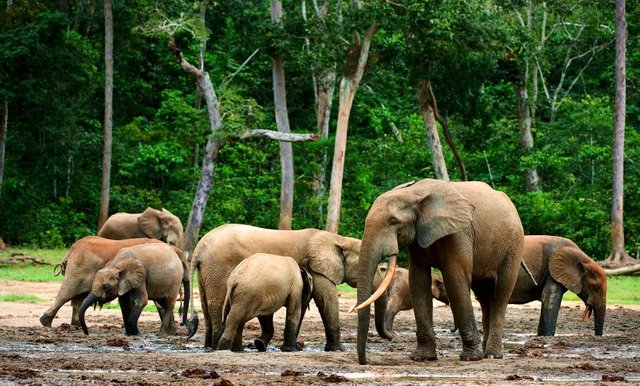
- African elephant
Status: being under the threat of disappearance.
Threats: In the 20th century the number of the African elephants was reduced in a geometrical progression. Illegal extraction of ivory has gained terrible scope. So, within 10 years preceding the international ban on trade in ivory (1990), the number of the African elephants has fallen twice. In 1970 there were 400 000 individuals, but by their 2006 there were only 10 000.
Kenya became one of the countries where the African elephants have been almost destroyed. During the period between 1973 and 1989 the quantity of elephants has decreased by 85% here. In Burundi, Gambia, Mauritania and Swaziland elephants have disappeared absolutely.
Now the African elephant formally has government protection, and in some areas, recently, the number gain on average for 4% is observed. However poaching still prospers. It is known that in 2012 the big surge in illegal extraction of ivory was observed.
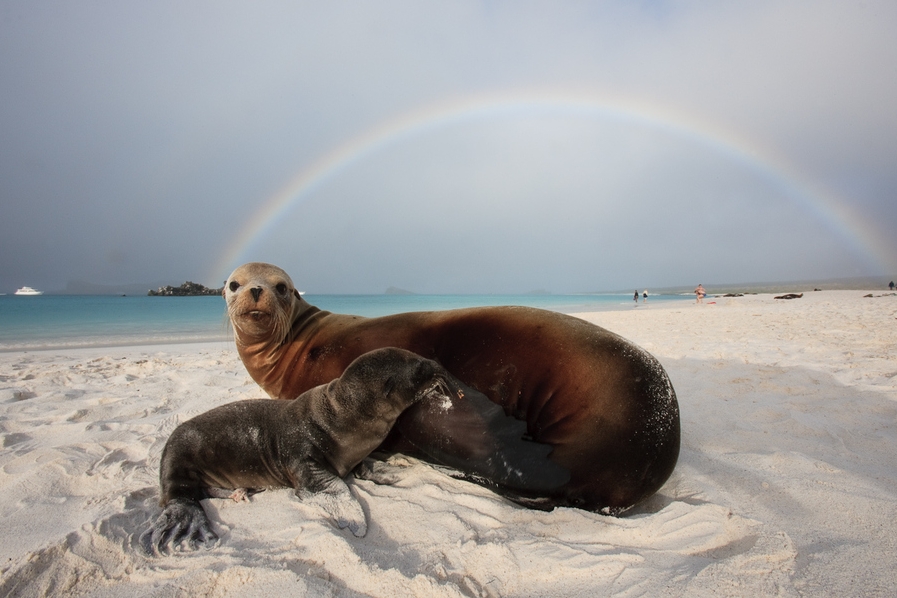
- Galápagos sea lion
Status: being under the threat of disappearance.
Threats: A Galápagos sea lion – one of species of the sea lions living only on Galapagos Islands and, slightly in smaller quantity on Isla-de-La Plata (Ecuador).
Population number in 1978 was about 40 000, now the quantity of individuals was reduced by 50%.
The main threats – a tendency to a case and the termination of reproduction during El Niño (the fluctuation of temperature of a blanket of water in the equatorial part of the Pacific Ocean having noticeable influence on climate), attack of predators, a possibility of infection with infectious diseases from wild dogs.
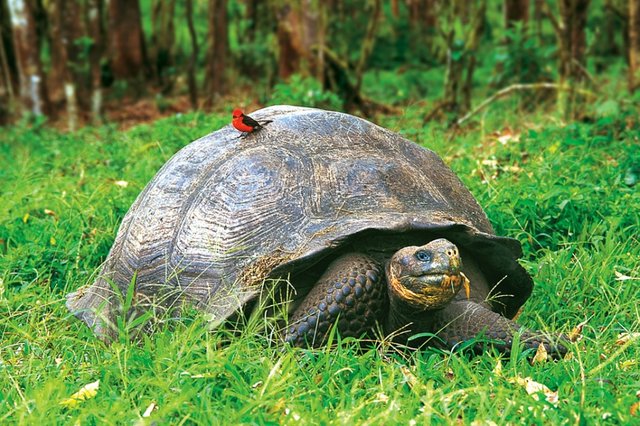
- Galápagos turtle or elephant turtle
Status: vulnerable.
Threats: There is an opinion that by the beginning of the 20th century more than 200 000 elephant turtles have been destroyed. It has led to the fact that on the islands of Charlz and Barington of a turtle have completely died out, on others have disappeared almost completely.
The records of logbooks relating to the middle of the 19th century say that in 36 years of 79 whaling vessels was taken out from islands of 10 373 turtles. The matter is that having discovered Galápagos, the European seamen began to use elephant turtles as "live canned food". Animals filled holds where they were till several months without water and food.
Besides, natural habitats for farming have been destroyed, the alien animals, such as rats, pigs and goats who have become for turtles competitors in getting of food are imported and widespread.
Since the beginning of the 20th century it has been put a lot of effort on restoration of population of Galápagos turtles. The cubs who are grown up in bondage have been let out on islands, in places of their natural dwelling. Today the number of elephant turtles is more than 19 000 individuals.
From fifteen subspecies of elephant turtles has remained only ten today. The eleventh subspecies have been presented by the only individual who is contained in bondage. He is known to us under the name of "Lonely George". Unfortunately, in June, 2012 George has died.
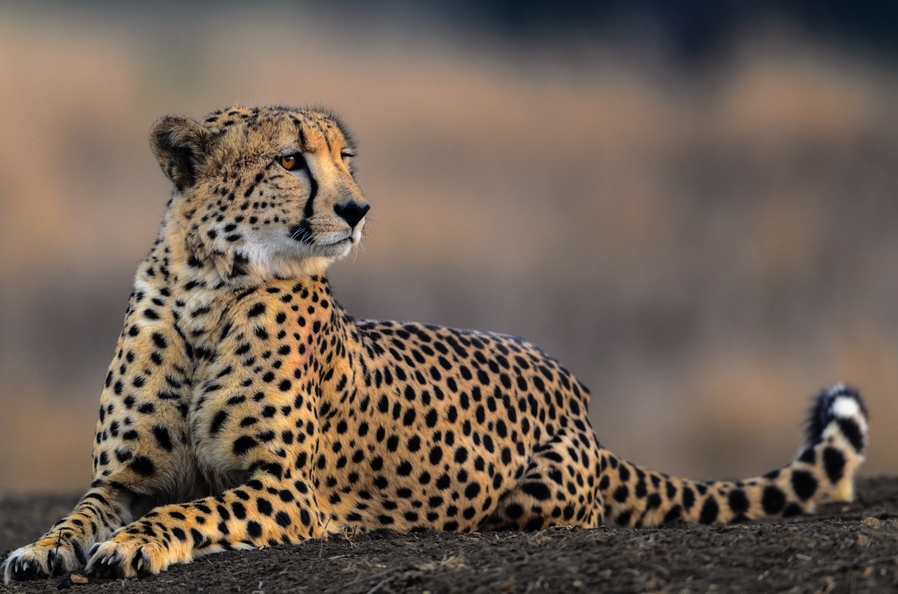
- Cheetah
Status: vulnerable.
Threats: Once cheetahs lived almost across all Africa, in the Middle East and in the central part of Asia. Today they meet only in Africa, to the south from the Sahara and in Asia where the single individuals who are on the verge of disappearance have remained.
The most part of cheetahs doesn't live in the protected territories, it leads to the conflicts with farmers. Because of narrowing of manned territories, cheetahs are often crossed with people, hunting a livestock. The local population considers them as "wreckers" and conducts with them constant fight. Besides, the skin of a cheetah is still a desired trophy for poachers. All this inevitably leads to reduction of population, for the last 20 years the number of cheetahs has decreased by 30%.
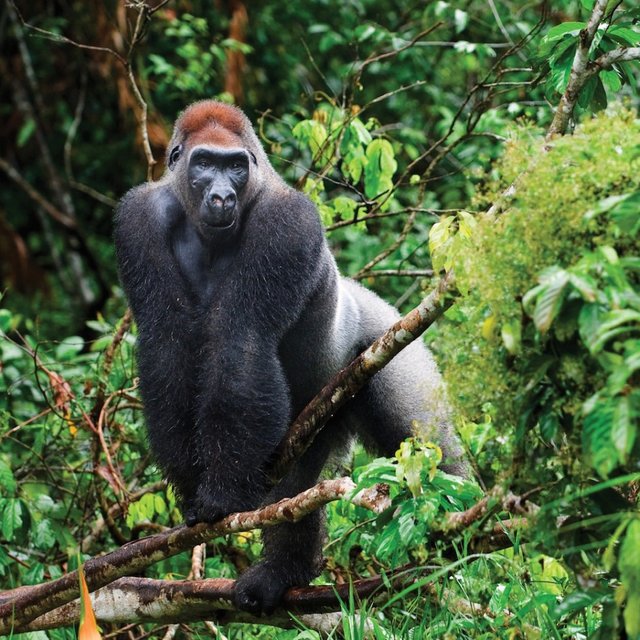
- Western gorilla
Status: is under critical threat of disappearance.
Threats: In 2007 the western gorillas have been brought in the Red List of endangered species.
Poaching, commercial logging and climate change – all this breaks ecological balance of the habitat and leads to gradual disappearance of population of the western gorillas.
But, perhaps, the biggest threat to existence of gorillas is the Ebola virus which is mowing clean individuals of this look including today, and in the protected territories. From 1992 to 2011, within 20 years, the number of the western gorillas was reduced by 45%. Now Ebola virus can exhaust population of the western gorillas to a critical point when restoration becomes impossible.
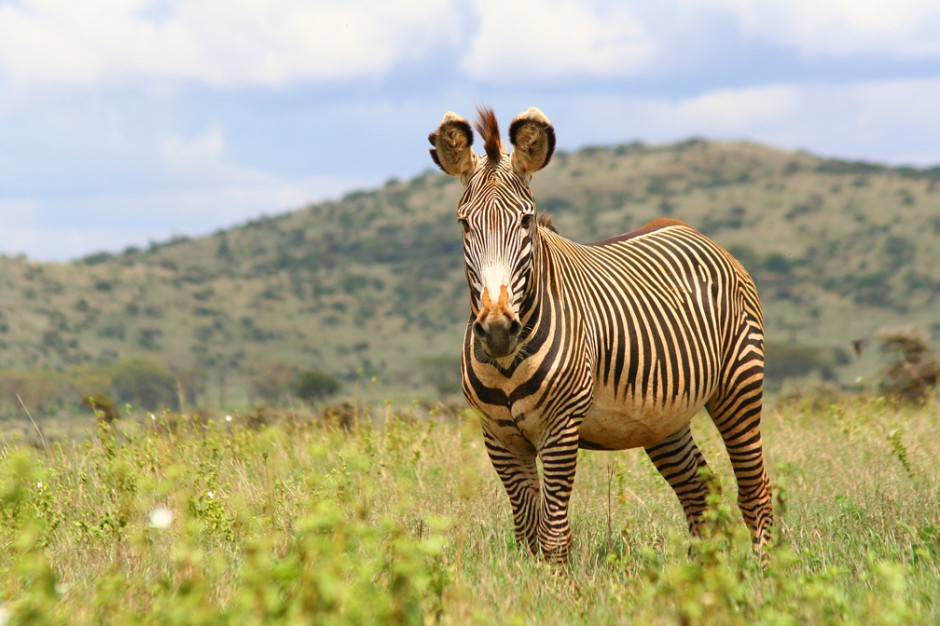
- Zebra of Grevi
Status: being under the threat of disappearance.
Threats: The zebra of Grevi or a desert zebra have been widespread in the past from Egypt to North Africa where she has been exterminated in antique times. It is supposed that her ancient naturalists called "a tiger horse".
The number of zebras of Grevi in the 1970th years was about 15 000, by the beginning of 21 centuries there were only 3 500 individuals, what is 75% less. Today it is considered that the quantity of the zebras of Grevi living in the wild nature is no more than 2 500. Support about 600 zebras in bondage.
Within centuries on a zebra of Grevi ruthless hunting, with the purpose to catch the beautiful skin which has become favourite decoration of an interior was conducted. Besides, the zebra was destroyed, including her the undesirable competitor of a livestock on pastures. Quite recently it has become clear that zebras of Grevi eat especially rigid species of herbs which can't be digested by cattle.
Now in Somalia and Ethiopia the zebra of Grevi is almost completely exterminated, only in Kenya it was succeeded to carry out effective measures on preservation of a look.
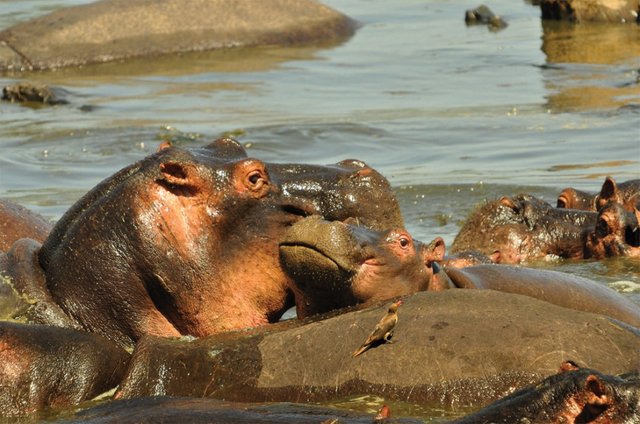
- Hippopotamus
Status: vulnerable.
Threats: The number of hippopotamuses in the world with for the last 10 years has decreased by 7 — 20%. As experts predict, in the next 30 years their quantity will drop by 30%.
Everywhere population of hippopotamuses has negative influence from the person. The local population conducts illegal production of hippopotamuses for the purpose of receiving meat and a bone of an animal. Illegal trade in a begemotovy bone has assumed the menacing scale at the end of the 20th century. For example, in 1991 - 1992 more than 27 tons of a bone have been withdrawn from illegal dealers and poachers. Besides, every year the number of the processed lands grows, the coastal lands which are for hippopotamuses both the house, and the place of feeding often swing open.
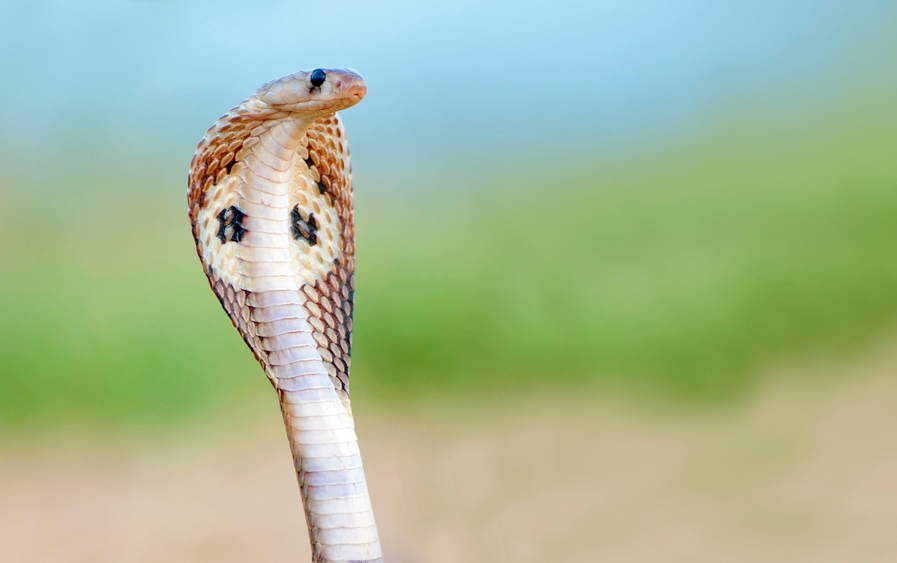
- Royal cobra
Status: vulnerable.
Threats: A royal cobra – one of the largest venomous snakes in the world. Lives across all Southern Asia, Southeast Asia and in the southern regions of East Asia (the southern China).
Poaching for the purpose of receiving skin for production of clothes and accessories, extraction of snake poison, valued and also for the sake of the receiving snake meat and blood which are considered in some countries as a delicacy is traditional medicine the main reason for extinction of population of a royal cobra. Today, the serious danger is constituted for the sake of appearances by broad agricultural activity of the person which leads to large-scale reduction of habitats of a royal cobra – rainforests.

- Osheynikovy idler
Status: vulnerable.
Threats: As inhabitants of tropics, idlers undoubtedly suffer from uncontrollable deforestation. Besides, hunt them for the sake of meat. Fortunately, recently this practice declines.
Once idlers were found even in North America. Now they live only in Central and South America, generally on the Plateau of Brazil and in Patagonia.
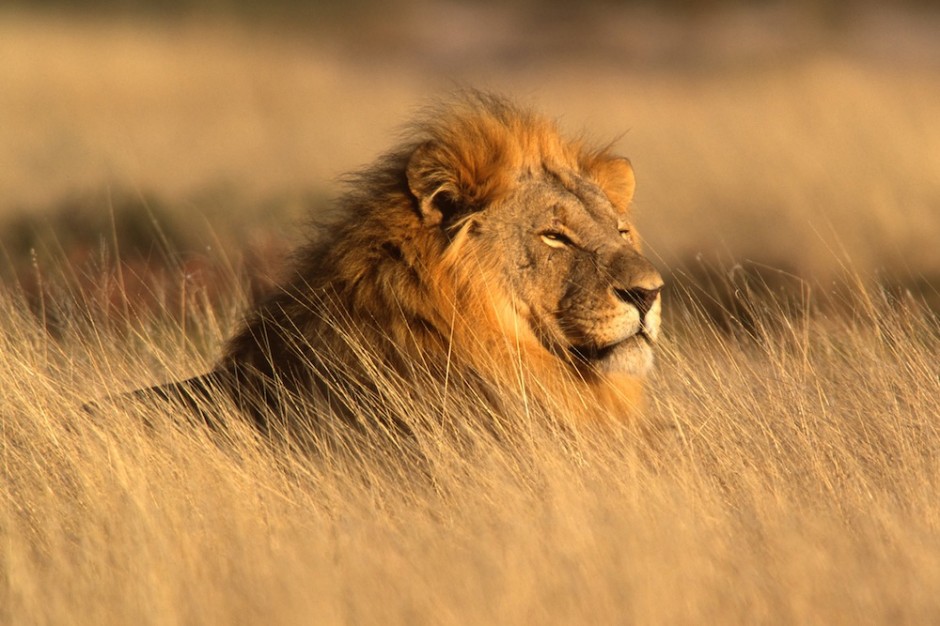
- African lion
Status: vulnerable.
Threats: Within the last two decades fast decrease in population of the African lion is observed. By estimates of experts it makes from 30 to 50% of total number.
In 1950 the number of the African lions made about 400 000, in the early nineties – 100 000, in 2002 - 2004 — 47 000 - 16 500 individuals.
Infectious diseases, trophy hunting and loss of the habitat are the main reasons for decrease in number of the African lion. The main threat – the conflicts with the person. People, trying to protect pets and own lives, often ruthlessly destroy lions (the poisoned baits – usual practice for their destruction).
Besides, lions of the Western Africa are isolated from the lions inhabiting the Central Africa. This aspect negatively affects reproduction and, finally, a genetic variety of a look.
The large role in preservation of population of the African lion is played by creation of national parks and wildlife areas. The most known of them – National park of Etosh in Namibia, Serengeti National Park in Tanzania and also National park of Kruger in South Africa.
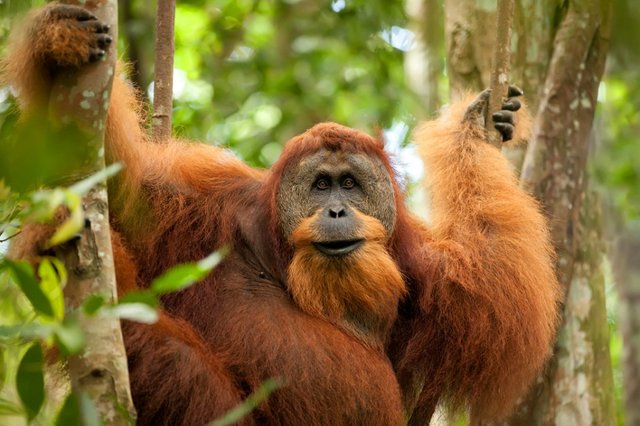
- Orangutan
Status: is under critical threat of disappearance (a sumatransky orangutan), is under the threat of disappearance (the Bornean orangutan).
Threats: Loss of the habitat because of the excessive cabin of the woods and her transformation for farming and construction of roads – the main problems which are critical for both species of orangutans. Now, despite creation of national parks, continue to fell trees illegally. Besides, the serious danger is constituted by illegal catching of cubs for the purpose of their further sale.
For the last 75 years the quantity of the orangutans inhabiting Sumatra has decreased more than by 80% and continues to be reduced inevitably. To Borneo within the last 60 years the number of population has decreased more than by 50%.
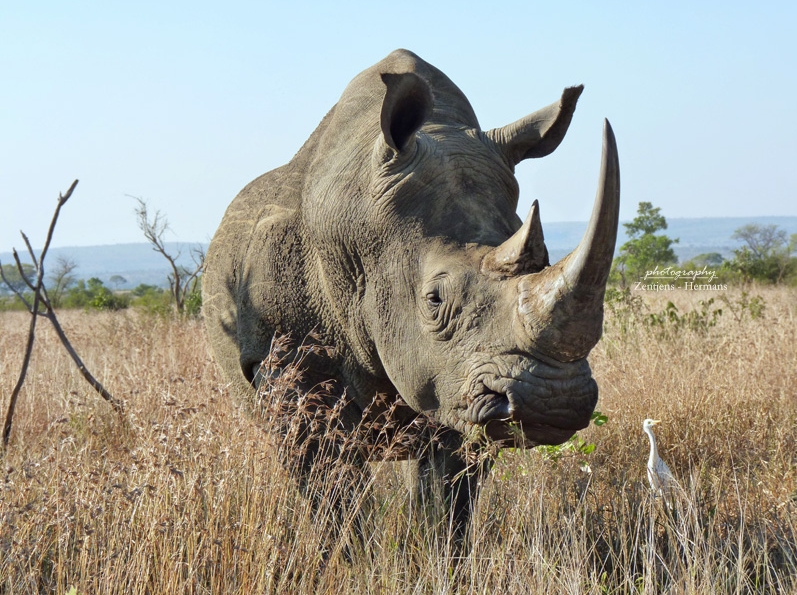
- Rhinoceros
Status: a white rhinoceros — close to extinction threat, sumatransky, black and Javanese rhinoceroses — are under critical threat of disappearance.
Threats: In the wild nature the adult rhinoceros practically has no enemies, except the person. The main threat for all species of a rhinoceros is poaching. A rhinoceros horn – very valuable goods in the black market, him are used both in decorative, and in the medical purposes. In the Chinese medicine the horn of a rhinoceros is considered good means against fever and effective aphrodisiac. In the black market the cost of kilogram of horns of a rhinoceros reaches $30 000.
2009 was marked by the unknown growth of poaching, measures for protection of rhinoceroses have been recognized as inefficient. Despite appeals of the South African officials to fight against poaching, the statistics of national parks has shown the following: 2010 – 333 rhinoceroses, in 2012 – 633 have been killed.
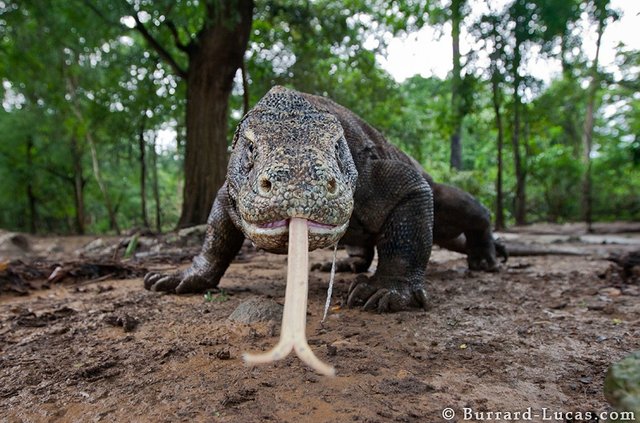
- Komodsky monitor lizard
Status: vulnerable
Threats: The Komodsky monitor lizard – the largest lizard in the world living on the Indonesian islands of Komodo, Rinka, Flores, Gili and Padar.
Volcanic activity, earthquakes, poaching, tourism – all this has led to considerable reduction of a livestock of monitor lizards. Today the main threat for the sake of appearances is degradation of the habitat, in particular, decrease in population of deer, wild boars and buffalo s, being the main production for monitor lizards.
Experts estimate population number at 4 000 – 5 000 individuals. However some scientists are afraid that among them there are only 350 females of reproductive age. For the solution of this problem in 1980 the Komodo National Park solving problems of preservation of a look has been created.
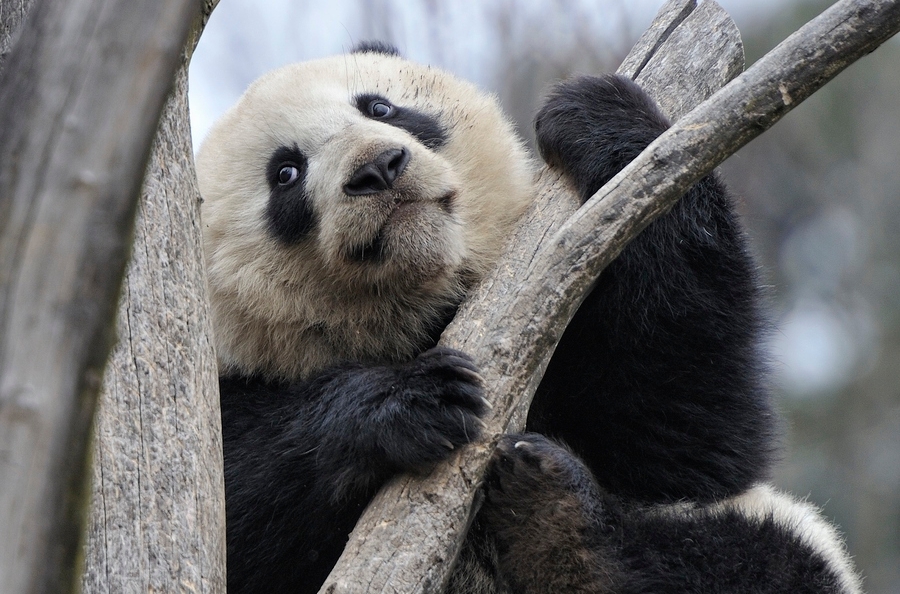
- Big panda
Status: being under the threat of disappearance.
Threats: The big panda can be met only on some ridges in Central China, generally in the Province of Sichuan and in smaller quantity in the Provinces of Shaanxi and Gansu now. As a result of economic activity of the person and deforestation, big pandas have been forced out from low areas where they once lived.
Since ancient times the big panda was object of poaching not only for the locals hunting them for the sake of a soft skin, but also for foreigners. In 1869 the animal has been imported to the west where it became the favourite of public and was perceived as a plush toy. In many respects this opinion has developed because of vegetarian character of food of pandas (a basis of their diet the bamboo makes).
Population of a big panda is annually inevitably reduced that is connected in many respects with extremely low level of birth rate both in the wild nature, and at contents in bondage. By estimates of scientists, now on Earth there were about 1 600 individuals.
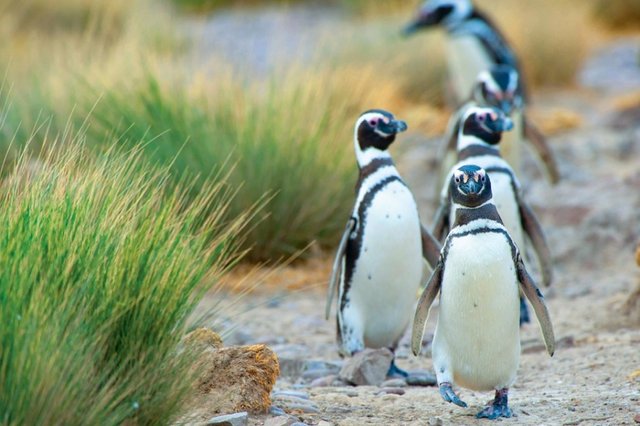
- Magellanic penguin
Status: close to extinction threat.
Millions of these penguins still live on the coasts of Argentina and Chile. However nested colonies of a Magellanic penguin extremely suffer from oil spills which annually kill 20 000 adult individuals and 22 000 baby birds.
Decrease in number of sea fishes also influences survival of a look. Serious climate changes have led to the fact that penguins have to swim 40 km farther from a nest in search of food.
Now, the number of 12 of 17 species of penguins quickly decreases.
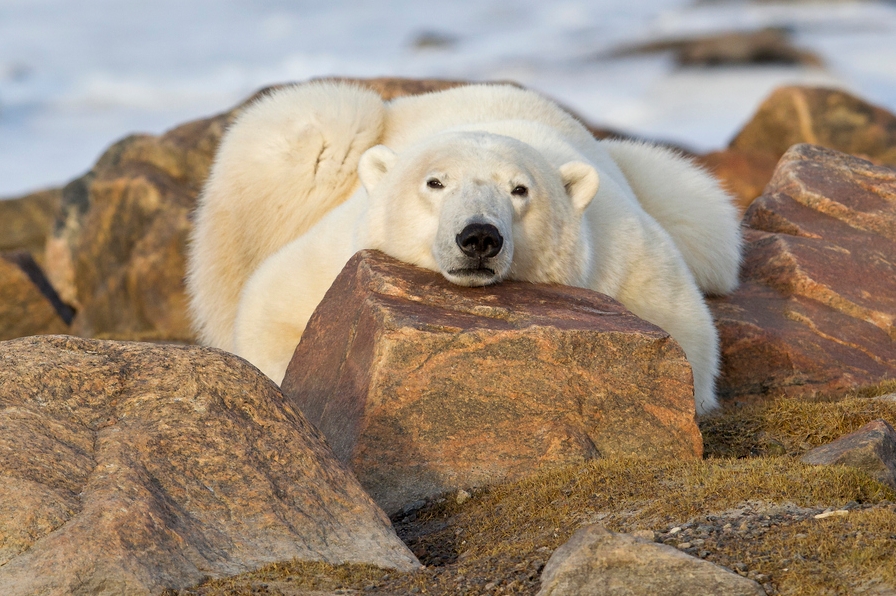
- Polar bear
Status: vulnerable
Threats: By estimates of the World union of conservation (data for 2008), the number of world population of polar bears is from 20 000 to 25 000 individuals today. Every year their quantity considerably decreases.
Due to the global warming of climate the Arctic ices promptly thaw. It means loss of the habitual habitat and great difficulties in getting of food for polar bears.
For the last 45 years the number of polar bears was reduced more than by 30%. By some estimates, within 100 years polar bears can irrevocably disappear.
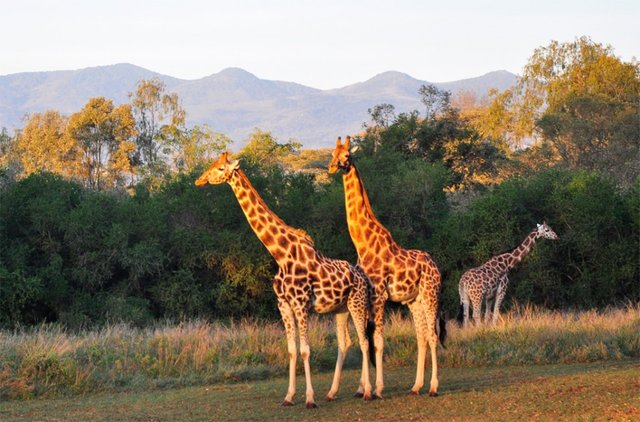
- Rothschild's giraffe
Status: being under the threat of disappearance.
Threats: Rothschild's giraffe known also as Baringo's giraffe or the Ugandan giraffe – one of the most rare subspecies of giraffes, in their wild nature is only several hundreds.
Farming in areas of dwelling of giraffes became the main reason of reduction of their number. Now they can be met only in the protected territories of National park "Lake Nakuru" in Kenya and National park "Murchison Falls" in northern Uganda. There is also Giraffe Centre to Nairobi which has become the house for many giraffes of Rothschild.
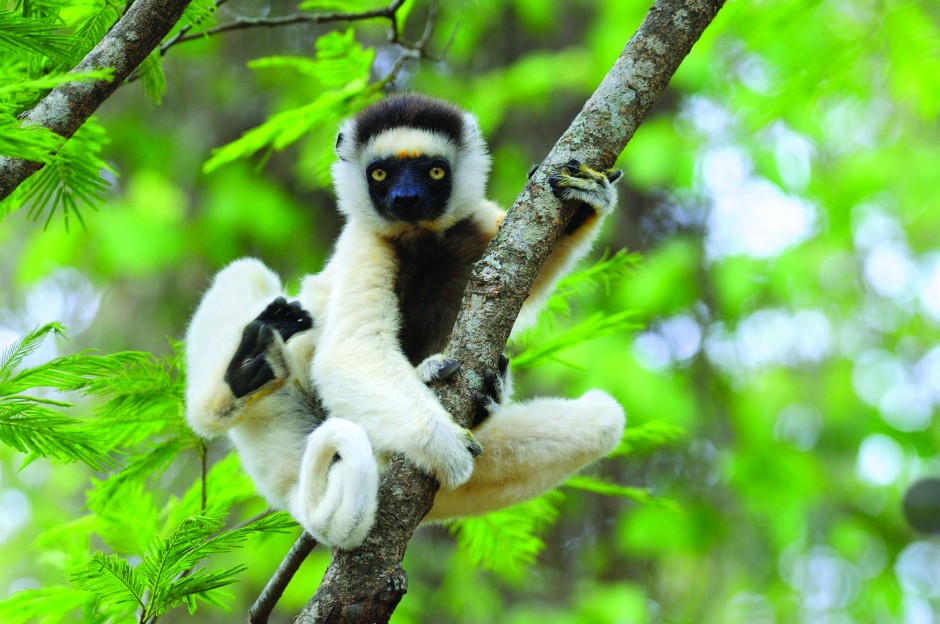
- Sifaka
Status: is under the threat of disappearance.
Threats: Sifaki is a genus of lemurs, representatives of family the indriyevykh. There are several types сифак: Verro's sifaka, Nut a sifaka, Crowned a sifaka, Gold crowned a sifaka, sifak the Drag-net and Perrier. All of them live only on the island of Madagascar.
Loss of the habitat in connection with active cutting and burning out of the woods in the region and the continuing hunting for lemurs – the main threats to existence of this surprising animal.
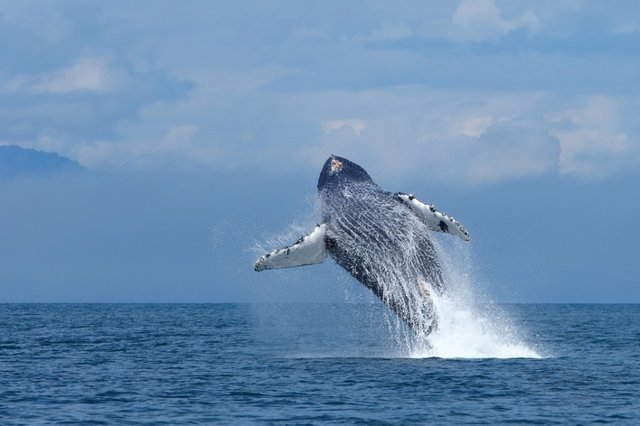
- Humpback whale
Status: vulnerable.
Threats: Humpback whales throughout centuries were object of intensive whaling, by 1996 it has led to reduction of their number almost for 90%. For the first time production of a humpback whale has been officially recorded in 1608, by the 18th century hunting for whales for the sake of their fat and meat has assumed an enormous commercial scale. It is supposed that since the beginning of the mechanized active trade not less than 181 400 whales during the period from 1868 to 1965 have been got.
The international commission on whaling anxious with critical condition of a look, in 1996 has imposed a total ban on trade of a humpback whale. Today production of whales is limited to several individuals a year got at coast of the island of Bekiya (the island belongs to the state of Saint Vincent and Grenadines). At the same time in Japan the program of scientific trade of a humpback whale (JARPA-II) according to which, only in 2007 for "the research purposes" 50 whales have been got works.
Now the number of population tends to increase. Nevertheless, there is a number of continuous threats, such as: collision with vessels, noise pollution, an opportunity to get confused in fishing tools.
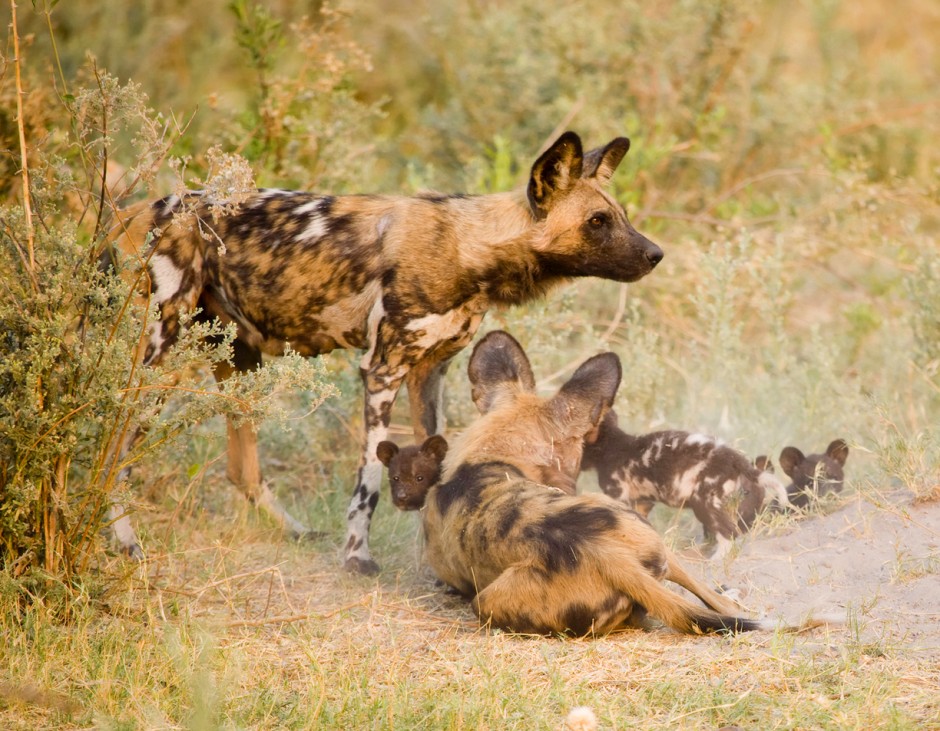
- African hunting dog
Status: is under the threat of disappearance.
Threats: Today the number of African hunting dogs is only 3 000 - 5000 individuals as a part of 60 — 100 packs. About a half of population lives in South Africa, it is a lot of in East Africa, especially in Kenya and Uganda, in the Central Africa – are extremely rare.
The reasons of extinction of African hunting dogs are obvious: loss of the habitat, infectious diseases, uncontrolled shooting.
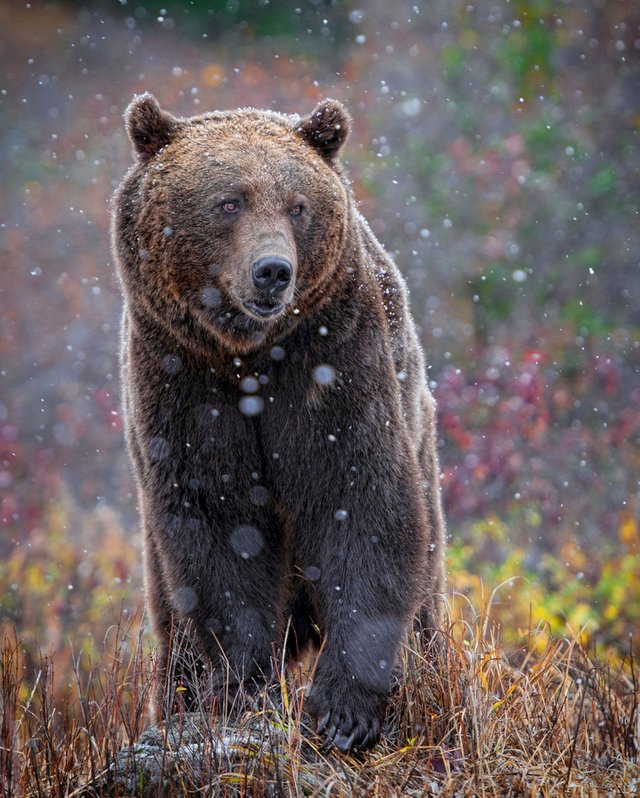
- Grizzly
Status: is under the threat of disappearance in the USA; is under critical threat in Canada; disappeared in Mexico.
Threats: I lived in last grizzly in huge territories from Alaska to Texas and Mexico.
There is an opinion that decrease in population of a grizzly has begun during the Spanish colonization of America. With the advent of Europeans and growth of large-scale settlements, habitual habitats of a grizzly began to be reduced steadily. For Indians the bear was a totemic animal and played an important role in mythology of many tribes. Nevertheless, even they hunted a grizzly, using his meat in food, a skin for production of clothes, and claws and teeth as jewelry. For immigrants from Europe the bear became a competitor at production of food and represented potential threat of life that has led to his mass destruction.
Now the biggest population of a grizzly lives in the territory of the Yellowstone national park. Total number of a look is estimated at 50 000 individuals today.
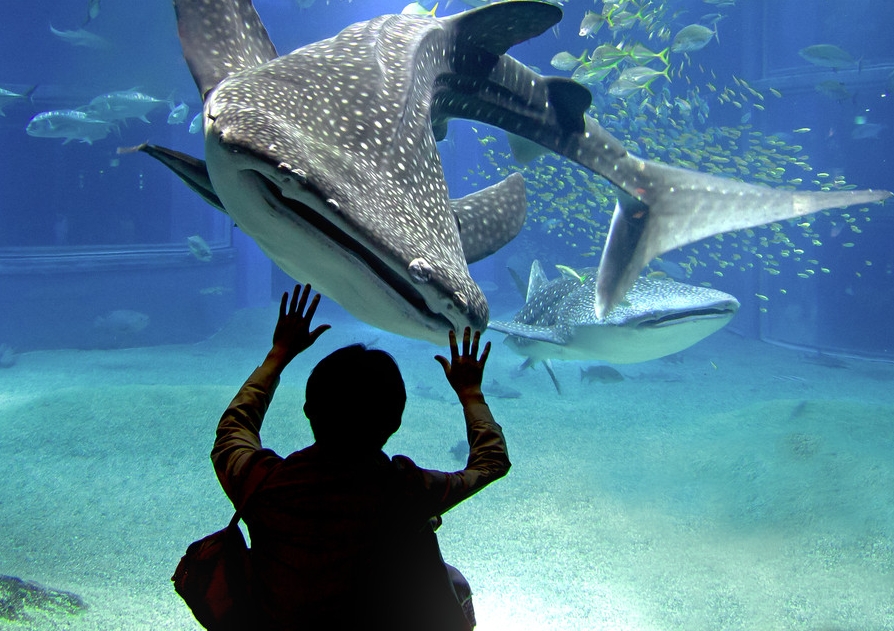
- Whale shark
Status: vulnerable.
Threats: There are no exact data on the number of the whale sharks living in the wild nature now. However, population of this look on Earth never was numerous. Some researchers report that on the planet there were only about 1 000 individuals.
Main threat to existence of whale sharks, certainly, their trade fishing. Despite the current bans on catch, production of sharks in the countries of Southeast Asia and India continues. Feature of development of whale sharks is their very long puberty and slow rates of reproduction that makes impossible fast restoration of population. Annually the number of whale sharks in the world decreases by 5% – 6%.